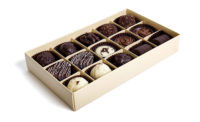While dashboard dining may seem like a term that was heard more often at the beginning of this century, it nonetheless has become a lifestyle for more and more people through the years. Whether you call it “dashboard dining” or “meals on the go” or simply just “eating in the car,” it continues to affect the way products are made and marketed as this trend becomes more ingrained into our culture.
This lifestyle choice has grown through the years. According to an article by Convenience Store News, in 1985 people ate 19 meals a year in their car compared with 32 meals a year eaten in their car in 2005. The Web site DoSomething.org states in 2012 that 20 percent of all meals are eaten in the car, which equals 18 meals in a typical month. Considering Americans’ hurried way of life, this statistic is not surprising.
So what does this all mean? Dictionary.com defines “Dashboard dining” as “the practice of eating fast food in one’s automobile; also, eating a meal while driving,” with the origin of this phrase coming “from placing one’s fast food order on the dashboard as the table.” With all the new cubbyholes and cupholders that vehicles have these days, the dashboard has been replaced as the holder of these meals for the most part, not to mention the specialty products you can buy to create a space in your front seat to accommodate your meals.
Product-development teams keep a keen eye on this trend and create unique packaging ideal for eating in the car while you are on the go. Examples include Chobani Yogurt and KFC’s Go Cup, both ideal to fit in the cupholder of the car. Squeezable pouches with fruit sauces or yogurt are not just for kids anymore. McDonald’s has a special container for its wraps that allows for just the top portion to be opened, giving customers the ability to eat the wrap with one hand while driving with the other. Several fast-food burger companies wrap their sandwiches in such a way that the bottom won’t drip onto your lap during your travels.
Portion control also comes into the picture. Some hurried consumers will pay more for a product that is just the right amount of food for their journey. At the opposite end of the spectrum, fast-food chains such as Subway offer consumers the choice of getting breakfast and lunch at the same time. C-stores stock single-serving foods ideal for busy consumers ranging from corn dogs on sticks, jerky, and other easy-to-eat meat products to more health-conscious choices such as fruit and cheese in cups.
But not all dashboard dining comes from fast-food or outside establishments. The bring-it-yourself trend redefines the standard packed lunch. Many dashboard diners, while they may not have time to eat at home, plan their meals meticulously to meet their dietary needs knowing the constraints of having to eat in the car on their way to work or during their travels throughout the day. Snack-size containers filled with sunflower seeds, raisins and an assortment of many other convenient type foods become a staple for those stuck in traffic on a long commute. Containers that offer compartments under the same lid allow the savvy driver to bring along crackers, veggies and dip. Yet according to Insure.com, the No. 1 choice of convenient car foods is the candy bar. Sometimes a tried-and-true product is the best.
Dashboard dining is universal. It includes all three key meals and snacks any time of day. It occurs year-round and nationwide. It is not limited to a specific gender or ethnicity. Heightened dashboard dining can occur around holidays or vacation time as families head out on road trips. Late-night drive-through windows cater to audiences that dig into their meals as they head home from a night on the town. Hurried parents use the convenience of these meals as they shuttle from one activity to another after school and on the weekends.
This way of life is here to stay in America. Web pages devoted to the best foods to eat in the car or the worst foods to eat in the car pop up on social media. Recipes for on-the-go foods can be found as well.
A note of caution, however, is important. Eating, or even sipping a beverage, while driving can be distractive and lower response time. Even the best of drivers can become reckless if their food drops in their lap or on the floor. Vigilance and common sense needs to be a priority for anyone who opts for dashboard dining.
And processors who might want to take advantage of this universal yet still-growing “mealtime” would be wise to create products that limit the possibility of distraction, while being convenient to buy and eat, and on trend in terms of flavors and varieties.








